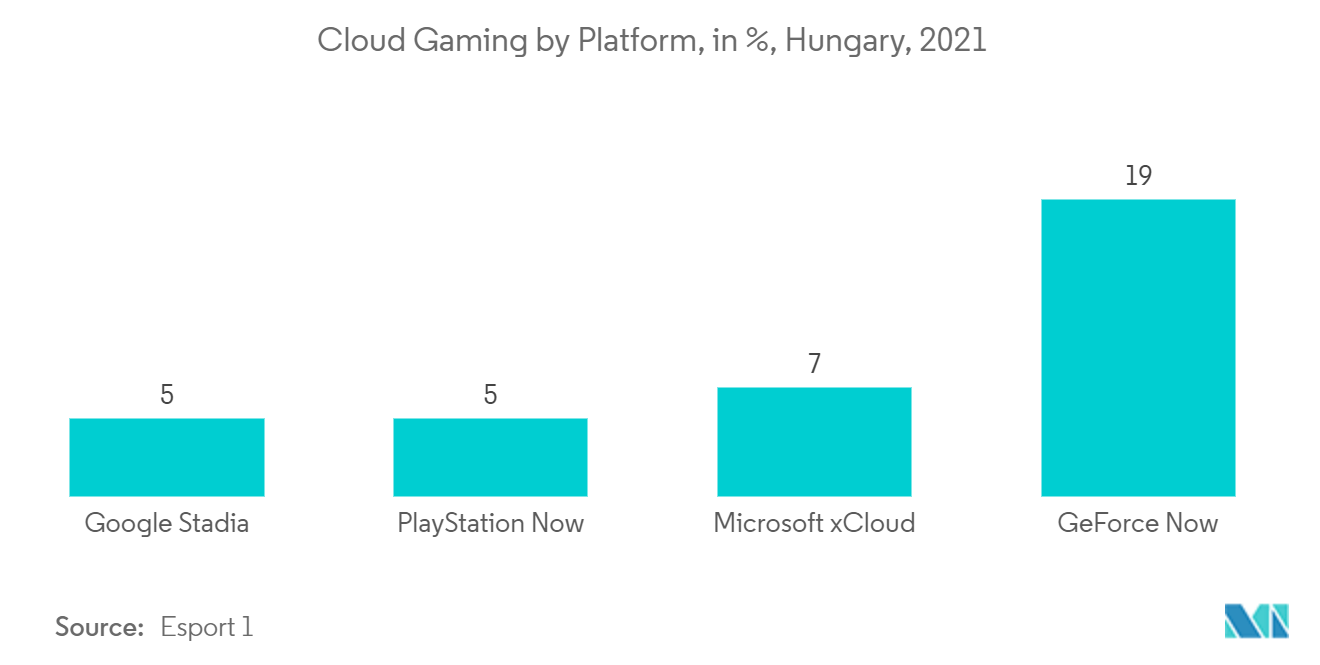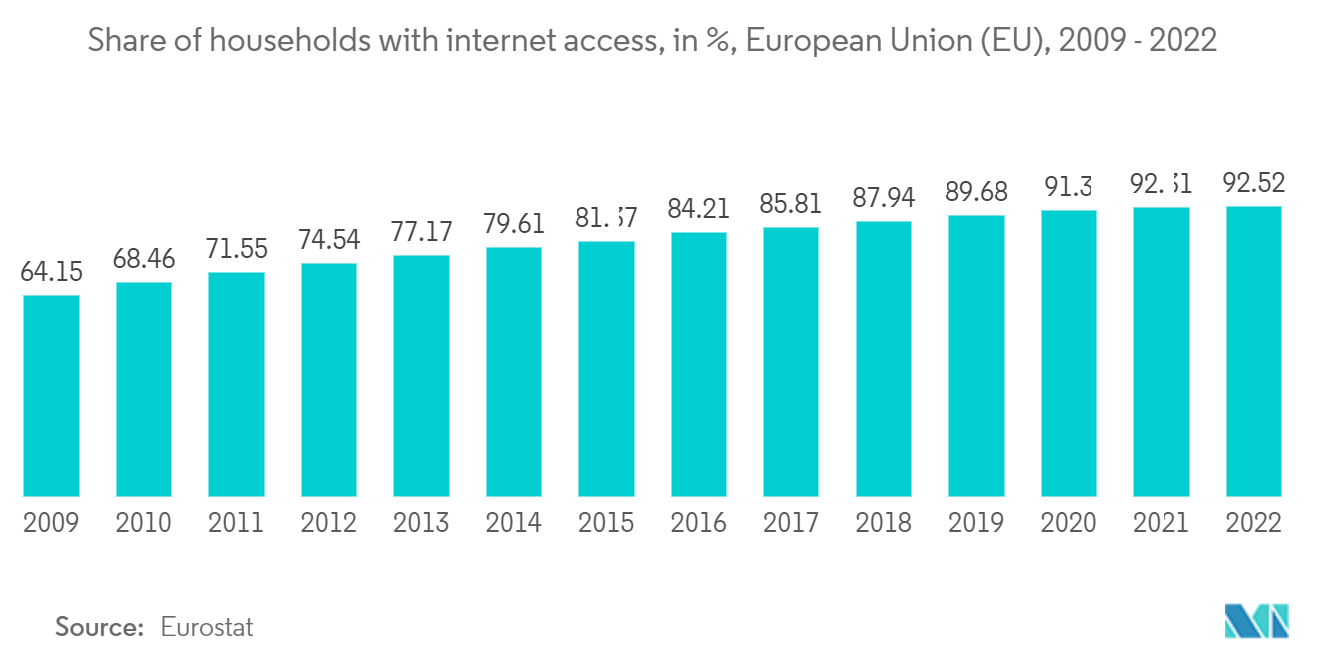Market Trends of Europe Mobile Cloud Industry
This section covers the major market trends shaping the Europe Mobile Cloud Market according to our research experts:
Gaming Segment is Observing a Significant Increase
- The video gaming industry has seen significant growth in Europe in recent years. The growth of the industry can be attributed to several factors, including the increasing popularity of mobile gaming, the growth of the esports industry, and the availability of high-speed internet and advanced gaming hardware.
- Moreover, the COVID-19 pandemic also played a role in the growth of the video gaming industry in Europe, as many people have turned to games as a form of entertainment and social connection while stuck at home.
- The mobile gaming industry is also increasing with the high penetration of smartphones in the region. For instance, the region commands a significant penetration rate of smartphones and mobile subscriptions, which is influencing the demand for gaming solutions. Ericsson says that when 5G comes out in 2025, that number should reach 500 million.
- Apple's iOS 14 updates can potentially disrupt app publishers' ability to market themselves and monetize through advertising effectively. The company reported that the abolition of the IDFA will make targeted advertising more difficult. The absence of IDFA will influence all mobile genres, both casual and core.
- GeForce, which was used by almost 20% of the eSports players questioned, was the most well-liked cloud gaming service in Hungary, according to Esport 1. Only 5% of respondents have also used PlayStation and Google Stadia at the same time.

Advancing Internet Connectivity is Expected to Drive the Market
- The EU has taken steps to boost connectivity in several areas. It eliminated roaming fees, allowing consumers to use mobile subscriptions throughout the EU at no additional cost. The WiFi4EU initiative helped local communities set up free Wi-Fi hotspots. The EU also offers finance, develops technical guidelines, and brings together specialists to assist governments and enterprises in improving network coverage and implementing 5G networks across Europe.
- To increase connectivity, the EU has taken action in several different sectors. As a result, customers were no longer charged for using their cell subscriptions while traveling within the EU. Free Wi-Fi hotspots were set up in neighborhood communities thanks to the WiFi4EU initiative's funding. Additionally, the EU offers financial aid, creates technical guidelines, and gathers specialists to assist enterprises and governmental agencies working on expanding network coverage and rolling out 5G networks across Europe.
- The Amsterdam Internet Exchange (AMS-IX), in particular, contributed to the Netherlands' status as a digital hub. AMS-IX is one of the largest internet exchanges in the world. For more than 25 years, it has helped ISPs, telecom companies, and cloud providers route their global traffic quickly, safely, and reliably.
- The EU has a 2030 plan to connect every European household with high-speed internet coverage by 2025 and gigabit connectivity by 2030. It also includes using the radio spectrum policy program to support wireless networks like 5G.
- According to a Eurostat poll, the proportion of homes in the European Union with internet access stayed almost the same in 2022 compared to 2021, at around 92.52%. But in 2022, 92.52% of homes in the European Union were connected to the internet, which was the most ever.

